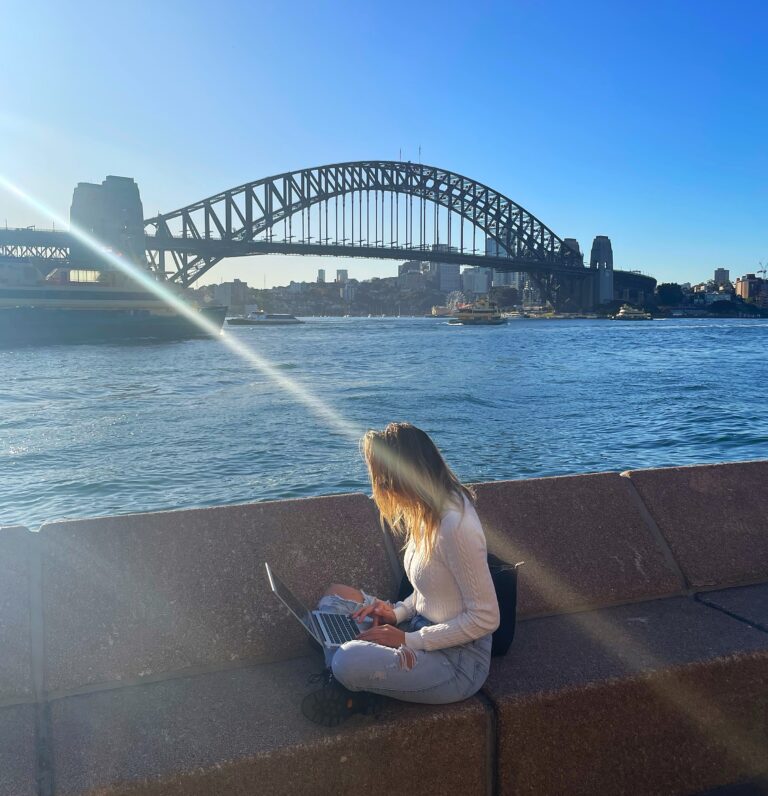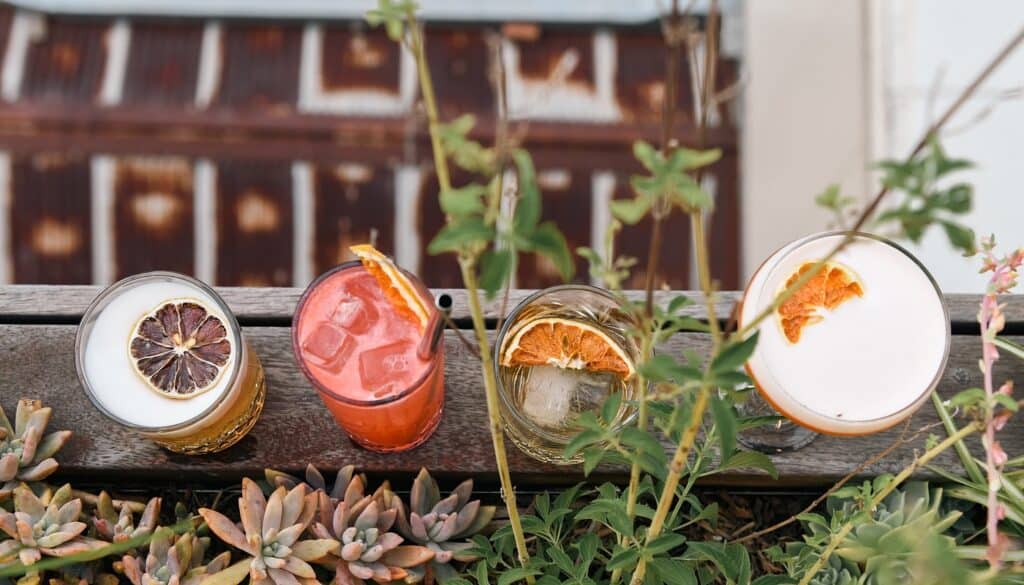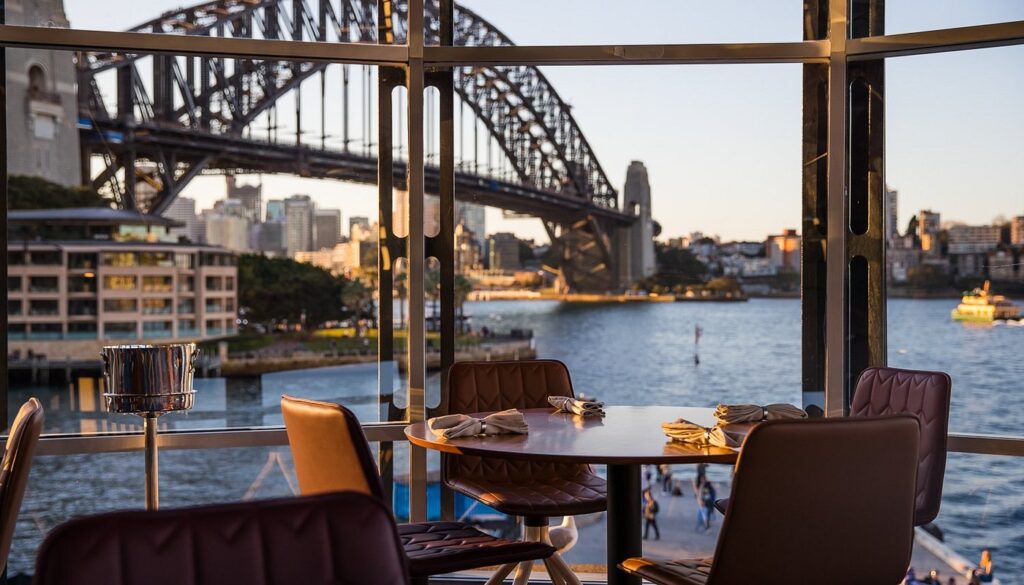Australia
Travel Guide
Home! I was born and raised in Sydney. No matter where I am, Australia will always have a special place in my heart. This is the ultimate Australia Travel Guide.
If you love nature, food and great coffee, you should definitely come to Australia! You can find everything you need, such as beautiful beaches, escape to the desert and learn about their indigenous heritage.
and let’s not forget meet the friendly locals

Destinations
- SYDNEY
- MELBOURNE
- BRISBANE
- GOLD COAST
- PERTH
- ADELAIDE
Best time to visit
Depending on what you want to do and where you want to go, generally, the best time to visit Australia is from November to March. Mainly at this time, most of Australia will have great weather.
It is wet season if you go up to the northern regions such as Darwin or Cairns, but don’t let this make you avoid the area. It is the best time to see some spectacular waterfalls
If a winery is your thing, definitely come between March and November. Imagine wine tasting in the winery with the fireplace burning while you look out the window and see the product of where your wine was made.
Know before you go
Language: English
Currency: Australian Dollar
Cash and Card: Pretty much everything can be paid for by card, ranging from restaurants to public transport in the major cities, where you can “tap on/off directly using your card. Taxis also accept cards.
Tipping: It’s appreciated for excellent service but not expected, as workers are generally paid well.
Plugs: Type I
Apps: Uber
Emergency Number: 000
Sim Card Provider: Vodafone, Optus
Must see attractions
Food recommendations
Evening hotspots
Safety
Australia is widely recognised as a safe and welcoming destination for living and studying, consistently ranking as one of the safest countries globally. However, no matter where you are, it’s always essential to prioritise your safety and stay mindful of potential risks.
Travel Advice
How long do I need for my trip in Australia?
The length of your trip to Australia depends on you. You can do things in just a few days or a fully immersive cultural experience that can last a few months.
As you can see, Australia is a very big country, and it is the only country that has its own continent. That is why many people who have left high school come to Australia on a working holiday visa and backpack around Australia for a whole year.
If you do not have a lot of time, that is fine. I recommend going to the east coast of Australia and visiting the Golden Triangle, Sydney, Melbourne, and Brisbane. If you only have a short time to come, such as one week, I recommend picking one city to visit.
How to get around in Australia?
The best way to get around Australia is by plane. Depending on where you are going, it will take between 1 and 4 hours to fly from each city. The major airlines are Qantas, Virgin Australia and Jetstar.
You can hire your own car and drive if you have more time. Usually, it will take a lot longer. For example, driving from Sydney to Melbourne can take around 8 hours, but you can stop along the way and see some hidden gems. This is for someone who loves road trips. Make sure you have comprehensive car insurance.
Another more budget option is by bus. Greyhound Australia, for example, offers many regional and domestic routes.
If you are more of a train person, then I recommend seeing Australia on the Ghan, Indian Pacific, Great Southern, and Overland.
Each Australian city has its own modes of transport, depending on where you are going. I go into it more in the cities guide.
Do I need a visa to enter Australia?
You’ll need a valid visa to enter the country unless you’re an Australian citizen. If you’re a New Zealand passport holder, you’re in luck—you can apply for a visa on arrival. For everyone else (regardless of age), you’ll need to sort out your visa before you leave home. Different types of visas are available, like tourist visas and working holiday visas, and you can apply through the ETA app or on the Department of Home Affairs website.
What I should pack to Australia
What you should pack depends on when you are going, what you will do and where you are going.
The essentials are sunscreen, sunglasses, and a hat for protection, as the sun in Australia is no joke.
Always bring a light jacket, as the weather in Australia can be unpredictable, especially in Melbourne.
If you plan to do a lot of outdoor activities, you should bring bug spray.
If you have planned a complicated trip and need more guidance, contact me at zanah@travelwithzanah.com, and I’ll be happy to provide more packing advice.
What travel insurance should I get?
Travel insurance is very important whenever and wherever you travel. I recommend World Nomad as they have the best coverage and customer service.
Are there any dangerous animals or insects I should be aware of in Australia?
Australia is full of incredible wildlife but is also home to a few creatures you’ll want to be aware of. Don’t worry, though – with some preparation, staying safe is easy.
On Land
- Snakes: Australia has some of the world’s most venomous snakes, but bites are rare. Stick to paths, wear closed-toe shoes, and if you see one, just back away slowly.
- Spiders: Redbacks and Sydney funnel-web spiders sound scary, but they’re not looking to bother you. Shake out shoes and clothes if you’re camping, and you’ll be fine.
- Dingoes: These wild dogs, mostly found on Fraser Island, can be curious. Please don’t feed them or leave food out.
In the Water
- Sharks: Shark encounters are rare, especially if you swim in patrolled areas and avoid dawn or dusk swims.
- Jellyfish: Watch for box jellyfish in northern waters (November to April). Swim in stinger nets or wear a stinger suit – they’re a lifesaver.
- Crocodiles: Up north, saltwater crocodiles are a big deal. Avoid rivers and estuaries with warning signs, and don’t swim where you shouldn’t.
Bugs & Insects
- Mosquitoes can be annoying, so pack insect repellent and cover-up, especially in the tropics.
- Ticks: Check yourself after hikes in bushy areas. They’re sneaky but manageable.
Stay Safe Tips
- Follow any warning signs or advice from locals.
- Pack repellent, wear sturdy shoes, and be mindful of your surroundings.
- Learn basic first aid for bites or stings – it’s always a good skill to have.
- Save Australia’s emergency number: 000.
What are the vaccinations and health precautions I should take before going to Australia?
If you’re heading to Australia, there are a few recommended vaccines to consider. The CDC and WHO suggest keeping up to date with hepatitis A, polio, rabies, Japanese encephalitis, hepatitis B, influenza, COVID-19, and routine vaccinations like pneumonia, meningitis, chickenpox, shingles, Tdap (tetanus, diphtheria, and pertussis), and MMR (measles, mumps, rubella). Always check with your doctor for the most relevant advice based on your trip!
What cultural norms or etiquette should I be aware of in Australia?
When visiting Australia, understanding a few cultural norms and etiquette tips can help you fit right in:
- G’day! Australians are friendly and laid-back, so a casual greeting like “Hi” or “How’s it going?” works perfectly.
- First names first. It’s common to address people by their first name, even in professional settings, unless they prefer otherwise.
- Respect the queue. Aussies value fairness, so always wait your turn in line.
- Sun safety matters. Slip, slop, slap—cover up, apply sunscreen, and wear a hat. It’s more than just etiquette; it’s essential for outdoor activities.
- Aboriginal culture. Respect Australia’s Indigenous heritage. Learn and observe the significance of sacred sites like Uluru, and follow any visitor guidelines.
- No worries! This phrase sums up the Aussie attitude—relaxed and easygoing. Stress less and embrace it.
- Drinking culture. Australians enjoy a social drink but know your limits and avoid pushing others to drink.
- Dress for the vibe. Australians tend to dress casually unless it’s a formal occasion.
- Punctuality counts. Being on time is appreciated for a coffee catch-up or a tour booking.
What should I know about Australia’s tap water—can I drink it safely?
Yes, tap water in Australia is generally safe to drink. Australia has strict water quality standards; most cities and towns provide clean, potable tap water. However, if you’re in a rural or remote area, it’s always a good idea to check with locals or use bottled water, as water quality can vary. Tap water is very high quality in major cities like Sydney, Melbourne, and Brisbane.
Become a
Solo Sister!
As a Solo Sister, you’ll gain access to exclusive resources, expert tips, and inspiring content designed to help you confidently embark on solo adventures and live the life you’ve always dreamed of.




